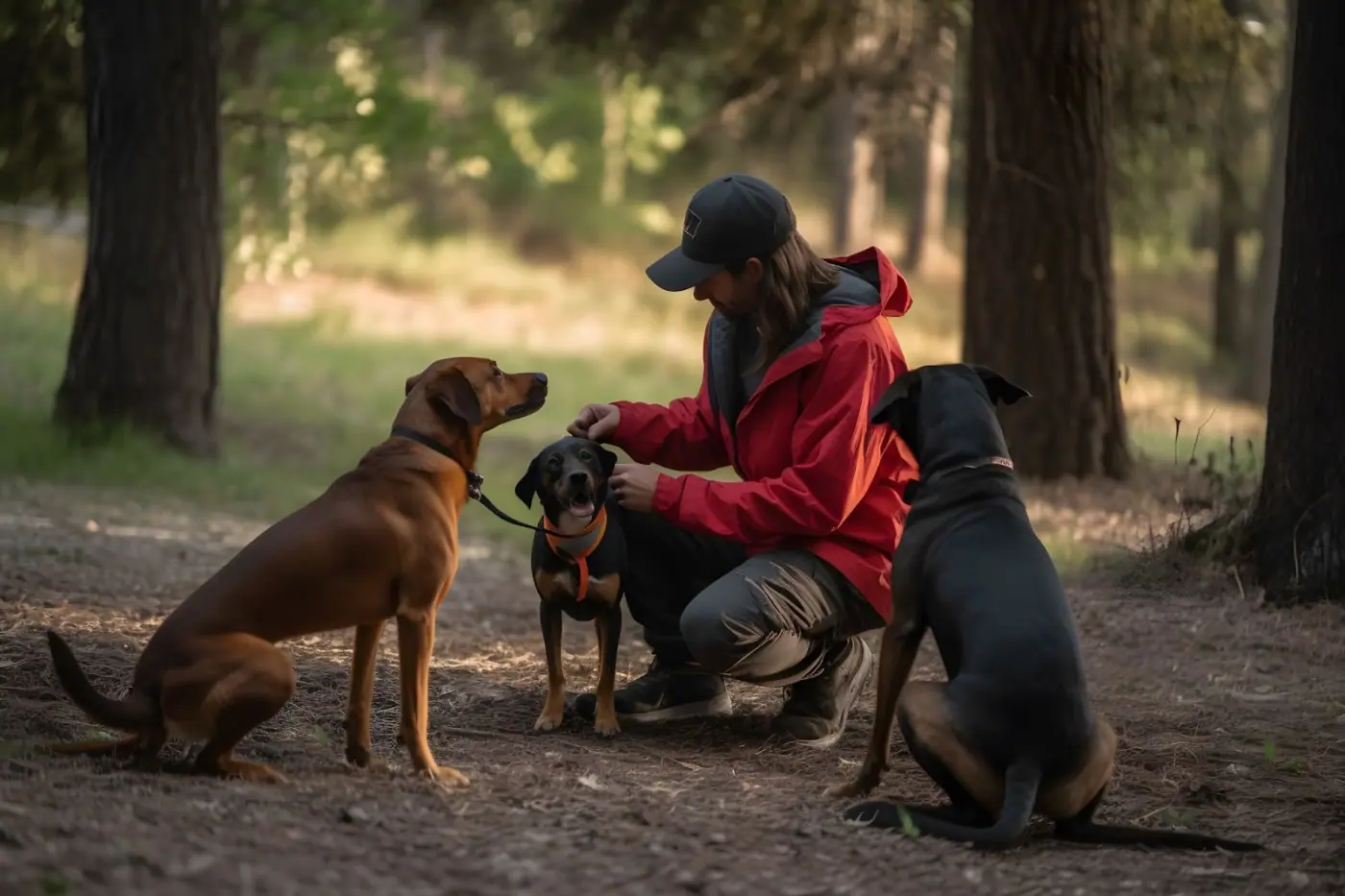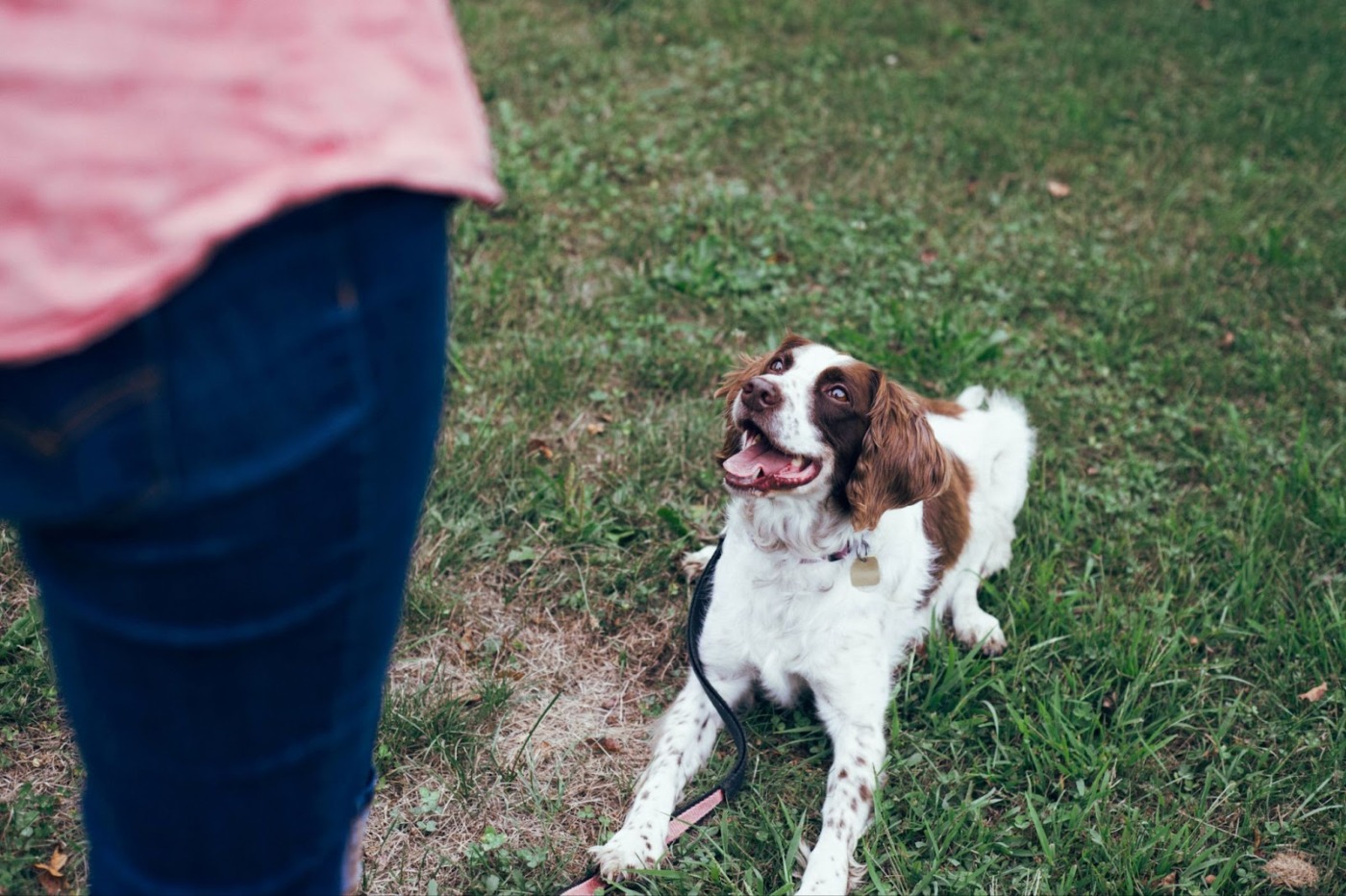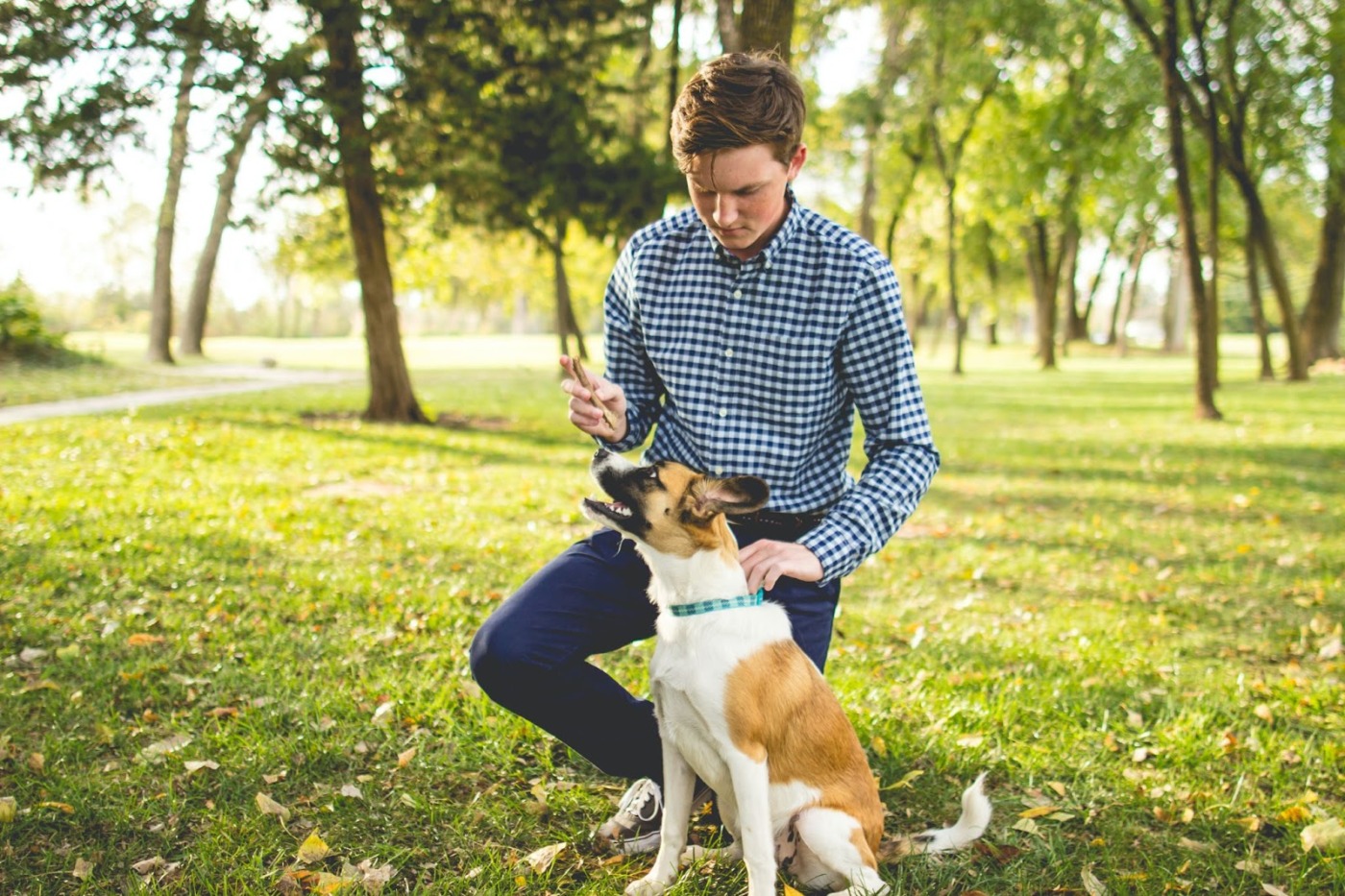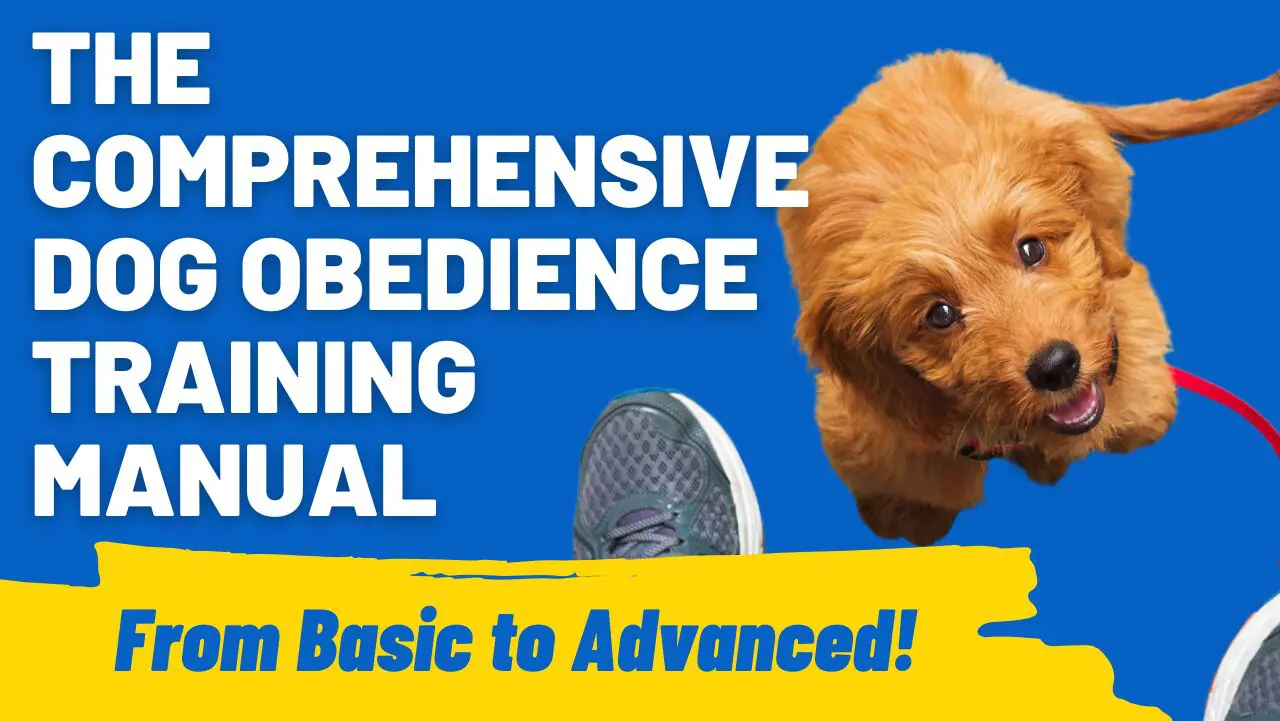Basic to Advanced: The Comprehensive Dog Obedience Training Manual
When bringing home a puppy for the first time, a lot of owners become overwhelmed by the preparations they need to do. At this stage, dog obedience should be prioritized to establish good behavior during puppyhood.
After basic dog obedience training, you can move on to more advanced training methods for your pup. In this way, you can have peace of mind and ensure your dog’s overall well-being and safety for the years to come.
But how do you begin obedience training for puppies? How do you start teaching advanced techniques to older dogs? All these questions will be answered in this guide.
Why Is Dog Obedience Training Essential?

It is every owner’s responsibility to train their dog. Dog obedience training, in particular, offers a lot of benefits, especially when started early.
A well-trained puppy can have safe interactions outside of its home. It is also eager to socialize with new people and other animals. More importantly, it can form a strong bond with its owner.
By implementing the right obedience training techniques, you can also prevent unwanted behavior in your dog like aggression, excessive barking, chewing, jumping, and digging.
Overall, obedience training is the key to creating a happy and fulfilling life for your dog. You can also be at peace knowing that your dog is equipped for the real world.
Where to Start? Understanding Basic Dog Obedience Training

Basic dog obedience training can start once you bring your puppy home. Typically, puppies can be trained at around eight weeks old. However, due to their short attention spans, you need to keep your first sessions short.
Preparing some simple equipment can also make training more convenient and effective. You need to have your treats at hand and buy a suitable dog collar and leash.
It’s also important to set up a schedule and be mentally prepared for the daily commitment of obedience training at home.
What Are the Fundamental Obedience Commands?
You can begin dog obedience training with some basic canine obedience commands, such as sit, stay, come, heel, and down. See the list below to learn how to teach them effectively.
- Name Recognition: Before you begin with simple commands, you must teach your dog to respond to its name. Call your dog’s name several times during idle moments. Your pup should look up and stare at you once they realize you are calling them. Reward them with a treat or lots of affection right after.
- Sit: This is the first command that your dog should learn during training. You can start by holding up a treat close to its nose. Slowly move your hand and let your pup follow with its head. Once it assumes a sitting position, say ”sit” and give the treat once it complies.
- Stay: This is another useful command that you can teach after your dog has mastered the sitting command. If your pup is sitting, start to move away from them slowly. Reward them once they don’t follow you and stay in place.
- Come: To teach your dog to come to you, put them on a leash and stand a short distance away. Say “come” and give them a treat when they come towards you. This command is especially useful when your dog gets untied from its leash.
- Heel: To establish good behavior when walking, teach your dog how to heel. To do this, hold your pup’s leash and let it walk beside you. Command them to sit and show them a treat. Say “heel” and continue walking. Once your dog follows, give the treat.
- Down: To calm your dog when it gets too excited, teach them the down command. Start by holding a treat in front of them and let your pooch smell it. Then, move the treat downwards to make them follow. Once their belly is flat on the floor, say “down” and give them the treat as a reward.
- Leave it: If your dog is fond of carrying strange objects in their mouth, you can benefit from learning how to do the leave it command. Start by holding a treat in front of your dog while hiding another one behind your back. Continue holding the visible treat and repeat “leave it” until your pup has no interest in getting it. Once this happens, give them the hidden treat.
- No: Another important command to keep your pup out of trouble is no. Put your dog on a leash and place a treat on the floor where they can see it. Walk towards the treat and if your dog starts sniffing it, tell them “no” and pull the leash. If your dog doesn’t eat the treat, reward them.
Mastering these basic commands is a must before your puppy can jump to advanced training lessons. Typically, your dog can learn them in six weeks, depending on how often you train them.
How Can Positive Reinforcement Training Enhance Obedience?
To effectively reinforce desirable behavior in your puppy, you should utilize positive reinforcement training. This involves giving treats or other forms of reward after your dog follows a command.
While it’s common to give your pup treats, not all dogs are responsive to a food-based reward system. It’s your responsibility to understand what truly motivates your dog. You can try giving it praises or have a short play session after doing a job.
Ultimately, successful obedience training is not achieved through negative punishment. To gain your dog’s trust, you must show that your dog will receive lots of love when they do something good.
Advancing Your Skills: What Comes After the Basics?
After mastering basic canine obedience and recall, advanced dog obedience training can be given to your furry companion. This is done to further develop your dog’s cognitive skills and teach them more complex commands.
What Techniques Are Used in Advanced Dog Obedience?
In advanced dog obedience training, several techniques can be used by dog owners. Most of them start with off-leash dog obedience training. This advanced skill requires a lot of trust between you and your pup.
When transitioning from on-leash to off-leash training, you need to keep your dog responsive to your commands as it roams around freely. This is when you should apply techniques to handle distractions.
Complex commands that teach your dog to respond to other objects and places can also be taught. Some advanced commands include “fetch,” “find it,” or “go to bed.”
How Can You Teach Obedience for Specific Challenges?
Canine obedience for fearful and aggressive dogs can be quite challenging but not impossible. Training dogs with these behaviors requires more patience and understanding from owners.
Through consistent positive reinforcement training and socialization, you can successfully curb these unwanted tendencies. Remember to start with basic obedience training techniques and note their improvement.
For instance, a reactive dog may resort to barking when they feel threatened by certain stimuli. Through teaching basic commands like sit or stay, you can control their impulse to other stimuli.
This will also help your dog to calm down and focus on you instead of being reactive or watchful of its environment.
You can also use a Dog Bark Corrector from Hound Games alongside obedience training for more effective results.
Special Considerations in Dog Obedience Training
In dog obedience training, it’s essential for new owners to consider the age of their pup. Many owners who typically own rescued dogs have to train older pups that may or may not have basic training.
Meanwhile, those with puppies have to start training from scratch. Before you begin obedience training, it’s important to set your expectations right.
How Does Obedience Training Differ for Puppies?
Training puppies is significantly different from teaching an older dog. Since they have shorter attention spans, you need to keep training sessions short and more engaging.
Puppy socialization and obedience are crucial at this age. Since they have the whole world around them to explore, they need to be exposed to different sights, sounds, and smells. They should also meet new people and furry friends.
This training goes hand in hand with dog obedience. If done early using the right methods, you can ensure that your puppy can be a well-rounded adult pup.
What Are the Best Practices for Obedience Training at Home?
Whether you are training a young puppy or an older dog at home, you should apply best practices for effective results. First, you should set up a daily training schedule. The American Kennel Club (AKC) recommends a minimum of five minutes per day.
Additionally, you should make your home conducive for training. Dog-proofing your house is advised to avoid unwanted accidents and keep your dog safe. You can use puppy gates to limit access to some areas of the house.
Since dogs communicate differently from us, it’s helpful to know how to translate your dog’s body language to determine their current emotional state. Knowing when your dog is fearful or worried can give you a clue on what to work on during training.
Keep your tone of voice normal when giving commands and avoid repeating them too many times. Remember to always make learning fun for your dog!
Exploring Different Training Methods: Which Is Right for Your Dog?

Dog training is not a one-size-fits-all approach. That’s why it’s worth exploring different methods that fit your dog’s needs. Some dogs may show better responsiveness through clicker training. Others may benefit more from enrolling in canine obedience classes.
What Is Clicker Training and How Does It Work?
Clicker training for dogs is one effective way of teaching obedience commands. You can use a clicker to make a distinct sound to signal your dog that they did something good.
Obedience training and clicker methods are effective to be used together, especially when teaching more advanced commands.
For example, when you’re training your dog to jump and catch a frisbee, you can mark the moment your dog catches it by using the clicker. This signals that your dog will get a reward afterward.
Can Group Classes Benefit Your Dog’s Obedience Training?
If solely training at home doesn’t seem to work well with your pooch, it’s time to consider group classes. Obedience for multiple dogs is helpful in developing your dog’s social skills.
By interacting with other dogs, they can also adapt good behavior from them.
Once your dog has gotten used to the presence of others and people, it’ll be easier to avoid distractions later on.
Moreover, your dog won’t be the only one learning from this experience. You, as an owner, can also learn new training techniques and tips from the trainer and from fellow fur moms and dads.
Taking Training to the Next Level: Obedience in Action
Obedience training in dogs goes beyond basic commands. A dog that has already mastered basic obedience and has some advanced training can still take it to the next level.
To maximize your dog’s potential, you can train them to participate in canine obedience dog competitions. The AKC organizes this sporting event to demonstrate a dog’s ability to follow basic commands and do both on- and off-leash activities.
Your dog must show how well-behaved it is in different settings, may it be at home or in public places. It should be calm in the presence of other dogs and show willingness while being handled by its owner.
If dog obedience competitions don’t float your boat, you can train for service dog obedience. According to the Americans with Disabilities Act (ADA), a service dog is one that’s been trained to perform specific tasks to help people with disabilities.
Extensive training is required to teach your dog to carry out specialized tasks, such as responding to emergency sounds and recognizing symptoms of a medical condition.
Troubleshooting Common Obedience Issues
Setbacks in dog training can’t be avoided, especially in the earlier stages. Your dog may not be responsive all the time, and some commands may take too long for your pup to learn.
The key to dealing with setbacks is to pause. Let you and your dog breathe for a bit by changing your routine. Your dog might need some rest to recharge and do other activities outside of training.
Once you feel that your dog is ready to take the challenge again, start slowly. Don’t jump back in right away. Instead, try to practice commands that they’ve already mastered and work from there.
You can also change the pace further by doing something different. Go to a different location for your next walk or training session so you can have an alternate option in case of another setback.
Lastly, you can review your methods and attitude towards training your pup and evaluate which areas you need to improve on. Remember, this is not a sign of failure, and your efforts have not been wasted.
Apply these canine obedience troubleshooting techniques to minimize the impact of this setback and easily get back to training with your dog.
The Role of Equipment in Dog Obedience Training
When it comes to training, you shouldn’t ignore the importance of equipment. The right tools can bring more effective outcomes, especially in dog obedience.
If you’re confused about which equipment to buy at the pet store, the table below outlines the items you need to ensure success in dog obedience training:
| Equipment | Use in Obedience Training |
| Dog Collar | Basic control, leash walking, teaching commands |
| Harness | Dogs prone to neck injuries, discourages pulling |
| Training Leash | Variable lengths for different training exercises |
| Clicker | Marking desired behavior for positive reinforcement |
| Training Treats | High-value rewards for reinforcing positive behavior |
| Treat Pouch | Convenient treat storage for rewards during training |
| Whistle | Teaching recall, signal for specific commands |
| Target Stick | Teaching specific commands or positions |
In training, the most common primary motivator or reinforcer is food or high-value treats. Training treats can be dried meats, chicken, hotdogs, meatballs, or cheese.
You will also need a second reinforcer to increase your dog’s motivation during obedience training. For example, you can let them play with their favorite toy after following a command you’ve been practicing.
Your dog might enjoy Puzzle Toys from Hound Games which can provide additional mental enrichment.
Conclusion
New and experienced dog owners must learn how dog obedience training works to make sure that their pups become well-behaved. Once your pooch reaches the expert level in basic obedience, you can continue leveling up its training.
You can experiment with different training methods depending on your dog’s age and current state. You must also prepare the right equipment to help reinforce the right behavior in your pup.
The benefits of obedience training can’t be achieved overnight. There’s bound to be some setbacks along the way. But you must remember that all your hard work will pay off in the end.
With enough patience and consistency, your dog can fully enjoy its life as you guide it in the right direction.

